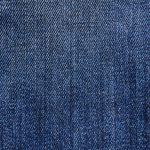Are you looking to buy high-quality cotton fabric? Look no further! This guide will help you assess fabric quality by providing valuable insights and tips.
Discover how to evaluate fiber characteristics, weight, thread count, and weave. Learn how to examine fabric strength, durability, and finishes.
Plus, we’ll explore color fastness, dye quality, and environmental and ethical factors to consider.
Get ready to make informed choices and find the perfect cotton fabric for your needs!
Table of Contents
Understanding Cotton Fiber Characteristics
Understand the essential characteristics of cotton fibers to assess fabric quality effectively. When it comes to cotton, it’s important to have a good understanding of the different types of cotton fiber and how they contribute to the overall quality of the fabric. Cotton fibers can vary in length, strength, and fineness, which ultimately affects the durability and comfort of the fabric.
There are four main types of cotton fiber: Egyptian, Pima, Supima, and Upland. Egyptian cotton is known for its long fibers, which result in softer and more luxurious fabrics. Pima cotton is also highly regarded for its long fibers, making it an excellent choice for high-quality garments. Supima cotton, which stands for ‘superior Pima,’ is a trademarked type of cotton known for its extra-long staple fibers and exceptional softness. Upland cotton, on the other hand, has shorter fibers and is more commonly used in everyday fabrics.
Understanding the different types of cotton fiber allows you to choose fabrics that suit your needs and preferences. Additionally, it’s crucial to understand fabric care for cotton fabrics. Cotton fabrics are generally easy to care for, but they can shrink if not washed and dried properly. It’s recommended to wash cotton fabrics in cold water and tumble dry on low heat to prevent shrinkage. Regular maintenance, such as avoiding harsh chemicals and excessive heat, can also help prolong the lifespan of cotton fabrics.
Evaluating Fabric Weight and Density
When evaluating fabric weight and density, it’s important to understand the difference between the two.
Fabric weight refers to how heavy or light the fabric feels, while fabric density refers to how tightly the fibers are woven together.
Both weight and density can serve as indicators of fabric quality, with heavier and denser fabrics often being considered more durable and higher in quality.
Weight Vs. Density
To properly evaluate fabric weight and density, you should consider the relationship between these two factors. Understanding how weight and density interact can help you determine the quality and performance of a fabric. Here are three key points to consider:
-
Fabric Thickness: The weight of a fabric is often closely related to its thickness. Heavier fabrics tend to be thicker, while lighter fabrics are usually thinner. Thicker fabrics generally offer more durability and insulation, whereas thinner fabrics are often more breathable and drape well.
-
Fabric Composition: The type of fibers used in a fabric can affect both its weight and density. Natural fibers like cotton and wool tend to be denser and heavier, while synthetic fibers like polyester and nylon can be lighter but still have good density. The fabric composition plays a significant role in determining the overall weight and density.
-
Performance Considerations: When evaluating fabric weight and density, it’s essential to consider the specific performance requirements. For example, if you’re looking for a fabric that provides warmth, a heavier weight with good density would be ideal. On the other hand, if you need a fabric for active wear, a lighter weight with sufficient density for moisture-wicking would be more suitable.
Quality Indicators
One way to assess fabric quality is by evaluating its weight and density, which can be indicators of its overall performance. The weight of a fabric refers to how heavy or light it feels, while density refers to how tightly the fibers are woven together. Cotton fiber properties and fabric texture play a crucial role in determining the weight and density of the fabric. A heavier fabric tends to be more durable and provides better insulation, while a denser fabric is less likely to shrink or stretch over time. To help you understand the relationship between weight, density, and fabric quality, refer to the table below:
| Fabric Weight | Fabric Density |
|---|---|
| Light | Low |
| Medium | Medium |
| Heavy | High |
Examining Thread Count and Weave
When it comes to assessing fabric quality, understanding thread count and weave is essential.
Thread count refers to the number of threads woven together in a square inch of fabric, and it plays a significant role in determining the fabric’s overall quality.
Additionally, the weave of the fabric, whether it’s plain, twill, or satin, can greatly impact its durability, appearance, and feel.
Thread Count Importance
Examine the importance of thread count and weave in assessing fabric quality.
When it comes to determining fabric quality, thread count and weave play a crucial role.
Here are three reasons why thread count and weave are important factors to consider:
-
Thread count accuracy: The thread count refers to the number of threads per square inch of fabric. A higher thread count usually indicates a finer and more durable fabric. However, it’s essential to ensure that the thread count is accurately stated. Some manufacturers may inflate the thread count by using thinner, lower-quality threads, giving a false impression of quality.
-
Thread count variations: Thread count can vary significantly depending on the type of weave used. Different weaves, such as percale or sateen, can affect the texture, appearance, and overall feel of the fabric. Understanding these variations can help you choose the right fabric for your needs.
-
Fabric durability: A higher thread count, combined with a tight and balanced weave, can result in a more durable fabric. Fabrics with a higher thread count and tighter weave tend to be more resistant to wear and tear, ensuring that your garments or home textiles last longer.
Weave Impact on Quality
To truly understand the impact of weave on fabric quality, you frequently need to consider both thread count and weave type.
The weave of a fabric refers to the pattern in which the threads are interlaced. One common type of weave is the satin weave, which produces a smooth and lustrous fabric. Satin weaves have a high thread count and are known for their luxurious appearance and feel.
On the other hand, the twill weave is characterized by diagonal lines or ridges on the fabric surface. Twill weaves are durable and resistant to wrinkles, making them ideal for garments like jeans.
Assessing Fabric Strength and Durability
To accurately evaluate fabric strength and durability, focus on its resilience. Resilience refers to the fabric’s ability to withstand stress and return to its original shape.
Here are three key factors to consider when assessing fabric strength and durability:
-
Tear resistance: A fabric with high tear resistance will be less prone to developing holes or tears, making it more durable. To assess tear resistance, try pulling the fabric in different directions to see if it stretches or tears easily.
-
Seam strength: Strong seams are essential for the overall durability of the fabric. Check the seams for any signs of fraying or unraveling. Additionally, examine the stitches to ensure they’re tight and secure.
-
Pilling resistance: Pilling is the formation of small balls of fibers on the fabric’s surface. Fabrics with low pilling resistance tend to look worn out and less appealing. Rub the fabric vigorously to see if any pills form. The absence or minimal formation of pills indicates higher durability.
In addition to these factors, it’s also important to consider the care instructions provided by the manufacturer. Proper care can significantly extend the fabric’s lifespan.
Identifying Quality Cotton Finishes
Now, let’s delve into the topic of identifying quality cotton finishes by considering the different types of finishes commonly used in cotton fabrics.
Quality control and fabric testing are crucial steps in determining the overall quality of cotton finishes.
One common type of finish is the mercerization process, which involves treating cotton fibers with caustic soda to improve their luster, strength, and dye absorption. Fabrics that have undergone mercerization tend to have a smoother, more refined appearance.
Another important finish is the sanforization process, which involves subjecting the fabric to mechanical pressure and moisture to minimize shrinkage. This finish ensures that the fabric maintains its size and shape even after multiple washes.
Additionally, fabric testing plays a vital role in identifying quality cotton finishes. Tests such as tensile strength, colorfastness, and abrasion resistance help determine the durability and performance of the finished cotton fabric.
Determining Color Fastness and Dye Quality
To determine the color fastness and dye quality of cotton fabrics, you should regularly test and evaluate the performance of the dyes used in the previous finishes. This will help you assess the dye stability and color retention of the fabric over time.
Here are three key factors to consider when determining color fastness and dye quality:
-
Lightfastness: Test the fabric’s resistance to fading caused by exposure to light. Expose the fabric to artificial light sources that simulate sunlight and evaluate any color changes. Fabrics with higher lightfastness ratings will retain their color for longer periods.
-
Wash fastness: Assess the fabric’s ability to retain color after repeated washing. Test the fabric by subjecting it to multiple wash cycles, using different detergents and water temperatures. A higher wash fastness rating indicates that the fabric’s color will remain vibrant even after frequent washing.
-
Rub fastness: Evaluate the fabric’s resistance to color transfer caused by rubbing or friction. Rub the fabric against a white cloth and check for any color transfer. Fabrics with good rub fastness will have minimal color transfer, indicating their ability to maintain color integrity even with regular wear.
By regularly testing and evaluating these factors, you can ensure that your cotton fabric maintains its color and dye quality over time.
This will help you select high-quality cotton fabrics that offer excellent color fastness and long-lasting color retention.
Considering Environmental and Ethical Factors
Consider the environmental and ethical factors when assessing the quality of cotton fabric. With increasing concerns about sustainability and fair trade, it’s important to understand the impact that cotton production has on the environment and the people involved in its cultivation.
Environmental sustainability refers to the ability to meet the needs of the present without compromising the ability of future generations to meet their own needs. When it comes to cotton, this means considering the amount of water, pesticides, and fertilizers used during cultivation, as well as the impact on soil health and biodiversity. Opting for cotton fabric that’s produced using sustainable practices can help reduce the environmental footprint of the textile industry.
In addition to environmental sustainability, it’s crucial to consider the ethical aspect of cotton production. Fair trade ensures that workers involved in cotton cultivation are treated fairly and receive fair wages for their labor. By supporting fair trade cotton, you can contribute to the improvement of working conditions, promote social justice, and empower farmers and workers in the textile industry.
When assessing the quality of cotton fabric, it’s essential to take into account both the environmental sustainability and the fair trade practices employed in its production. By making conscious choices, you can support a more sustainable and ethical textile industry.
Frequently Asked Questions
How Does the Type of Cotton Fiber Affect the Fabric’s Overall Quality and Feel?
The type of cotton fiber affects how the fabric feels and its overall quality. Factors like staple length, strength, and fineness influence fabric quality and performance. So, it’s important to consider these factors when assessing cotton fabric.
What Are Some Common Fabric Weights and Densities for Different Types of Cotton?
Common fabric weights and densities for different types of cotton vary. Understanding these variations will help you assess fabric quality. Consider factors like thread count, yarn thickness, and weave tightness to gauge density and weight.
How Does Thread Count and Weave Affect the Comfort and Durability of Cotton Fabric?
Thread count and weave greatly impact the comfort and durability of cotton fabric. Higher thread count results in softer and more breathable fabric, while a tight weave enhances durability. Consider these factors when evaluating fabric quality.
Are There Any Specific Fabric Tests or Standards Used to Assess the Strength and Durability of Cotton?
There are fabric tests and cotton standards used to assess the strength and durability of cotton. These tests and standards ensure that the fabric meets specific criteria for quality and performance.
What Are Some Indicators of High-Quality Cotton Finishes That Contribute to the Fabric’s Overall Quality and Performance?
When it comes to cotton fabric finishes, it’s essential to consider indicators of high-quality. These indicators greatly contribute to the overall quality and performance of the fabric, which is crucial in clothing manufacturing.
- Tetron Fabric for Marine Applications: Durability and Use Cases - June 18, 2025
- Tetron Fabric for Outdoor Furniture: Weather Resistance and Care - June 18, 2025
- Tetron Fabric for Wall Coverings: Style and Application Tips - June 18, 2025




